Welcome to Moda Fabrics!
Aprons: Keeping It Clean and Creative
Aprons: Keeping It Clean and Creative
 While we may think of aprons as a relatively recent invention, something to keep spaghetti sauce and bacon grease from splashing on our best shirts, they've been around a long time.
While we may think of aprons as a relatively recent invention, something to keep spaghetti sauce and bacon grease from splashing on our best shirts, they've been around a long time.
In fact, aprons appear in medieval paintings from the 1300s, and in the 1500s they were adorned with lace and embroidery and worn by fashionable women. Tradesmen who engaged in dirty tasks—think blacksmiths, fishmongers, and cobblers—have worn aprons for centuries to protect their clothing and aprons have even shown up as part of ceremonial dress—members of the French Foreign Legion Sappers unit carry axes and wear leather aprons.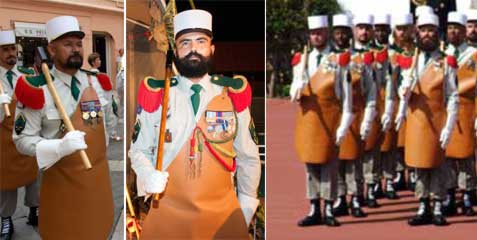
More recently, housewives wore aprons to protect their clothing while cleaning and cooking. Full aprons and half aprons stitched from florals and decorated with rickrack helped make dreary tasks a little less so.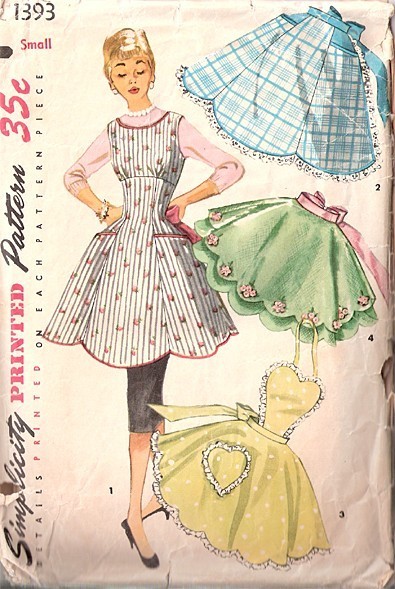
Aprons, very popular in the 1940s and 1950s, fell out of favor in the 1960s as the women’s movement came into being and women stepped out of the home and into the workplace. Today, aprons are once again popular for men and women to wear, and it’s no surprise why—they’re useful in the kitchen, garden, and dye room and if you’re someone who makes aprons, there are myriad pattern options.
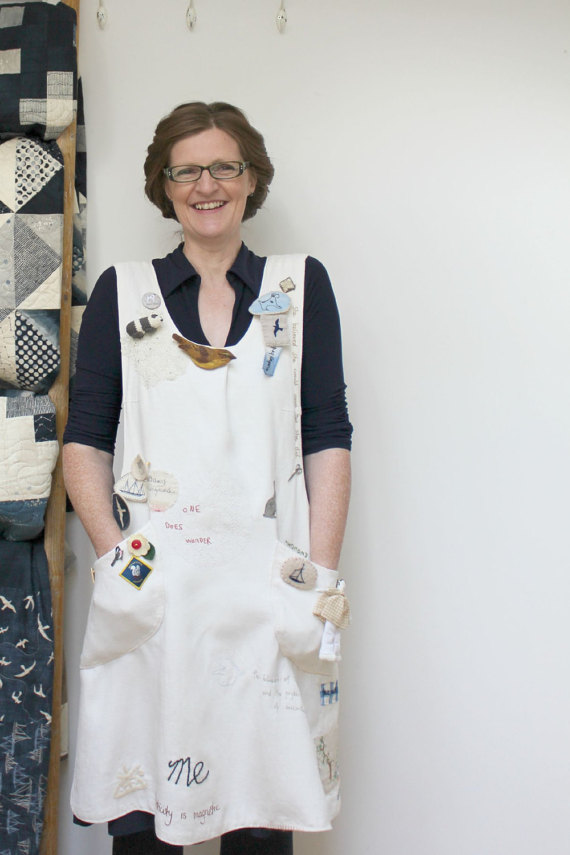
One of those options is the Artisan Apron pattern by Moda designer Janet Clare, who first started wearing an apron to help her feel that she was officially “on duty.” As a mother of young children who worked from home, she fell prey to the distractions of the washing machine and doorbell and thought that dressing like a creative person might be the answer. She decided that an apron could serve as a uniform and that it might put her into an “I’m at work” mindset, so she designed one based on vintage patterns and stitched it of creamy linen.
Janet wears the apron whenever she teaches and gives talks, including on Create and Craft TV. As it became part of her signature style, people clamored for a pattern. She obliged, and has since sold thousands. The apron has no buttons or ties but slips overhead, its straps crossing at the back. It features a comfortable, loose neckline and two oversized pockets (Janet carries a sand-filled “worry doll” in one of them).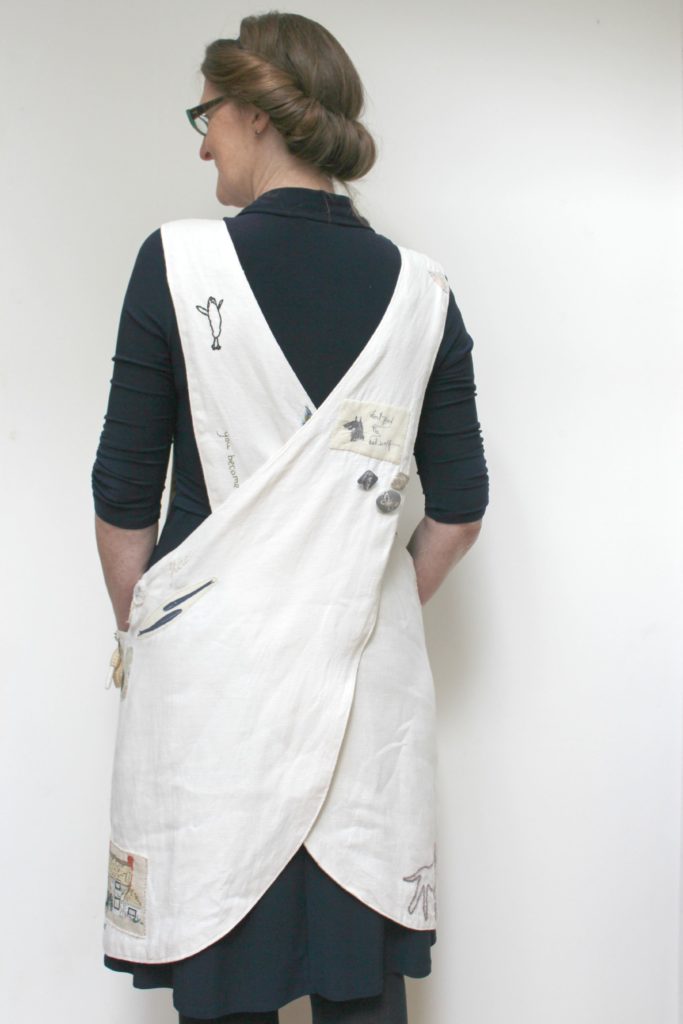
The apron is an ongoing project, and she’s added embroidery, lace, badges, and other meaningful embellishments. Janet embroidered her work motto—“She believed she could and so she did”—and continues to add to the apron as the mood strikes her. She tosses items to add in a green, vintage tin in her studio and then every few months she’ll have an apron day and stitch them on. Adding to the apron is a process and one that may never be finished, but that works well for her. “When I wear my apron, I am Janet Clare, the designer,” she says. “I feel creative and inspired, it gives me confidence. My simple, humble apron is an ever-evolving work of art that tells the story of me.”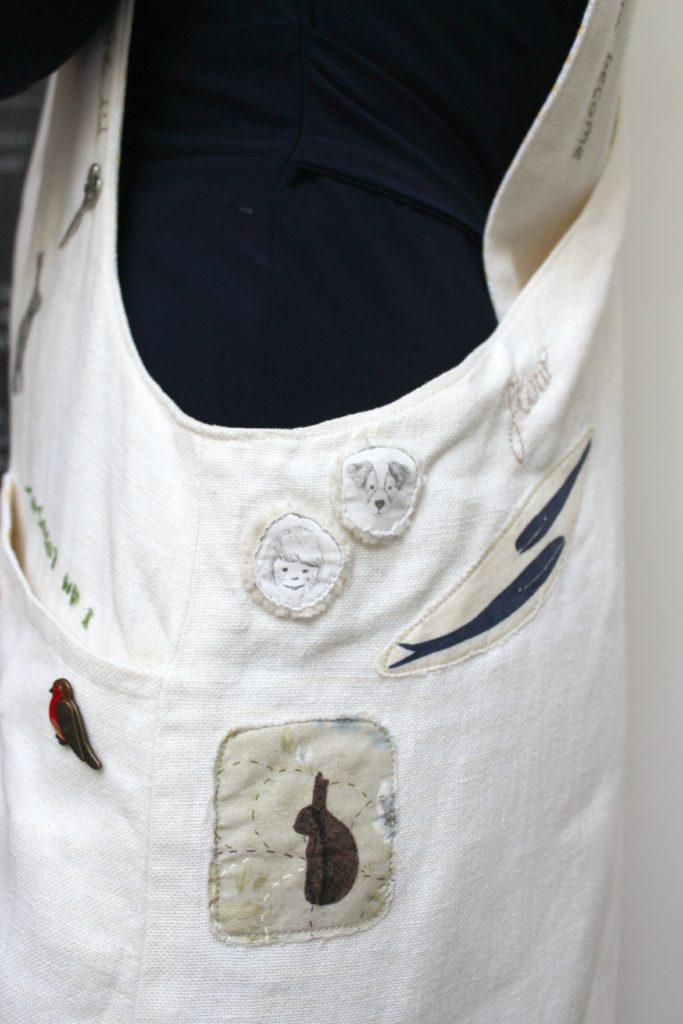 Janet thinks most everyone could benefit from an apron of their own. “Make yourself the nicest apron you can and then gradually (with no rush or pressure) embellish, decorate and adorn it,” she says. “In time you, too, will know the delight in being able to wear your creativity.”
Janet thinks most everyone could benefit from an apron of their own. “Make yourself the nicest apron you can and then gradually (with no rush or pressure) embellish, decorate and adorn it,” she says. “In time you, too, will know the delight in being able to wear your creativity.”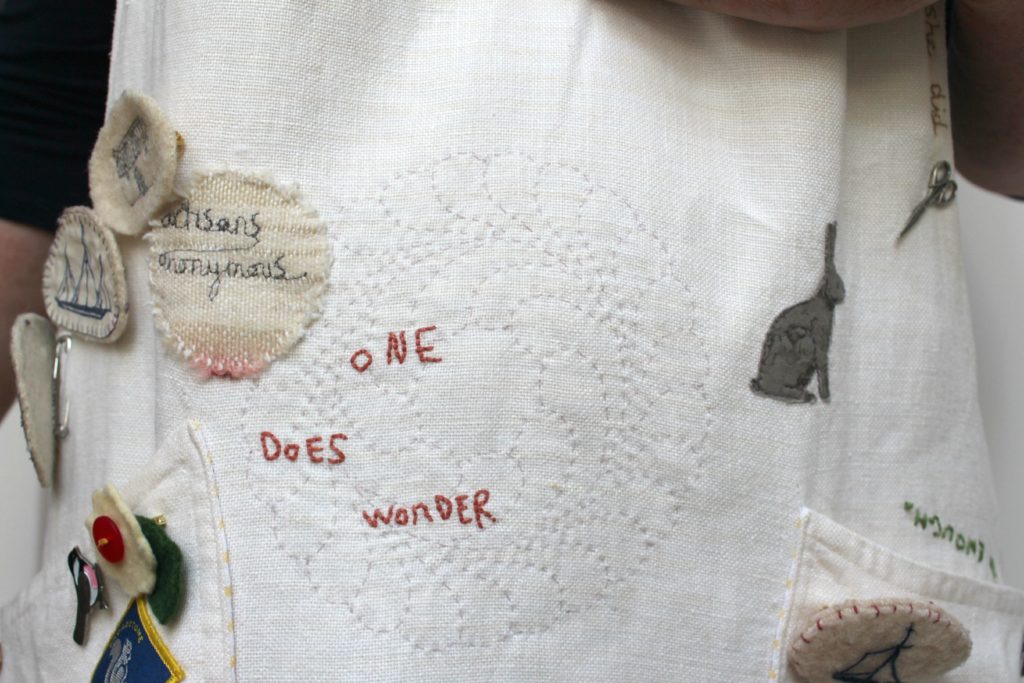
Janet’s newest line, Aubade, would be perfect for creating badges and appliqué to decorate YOUR apron.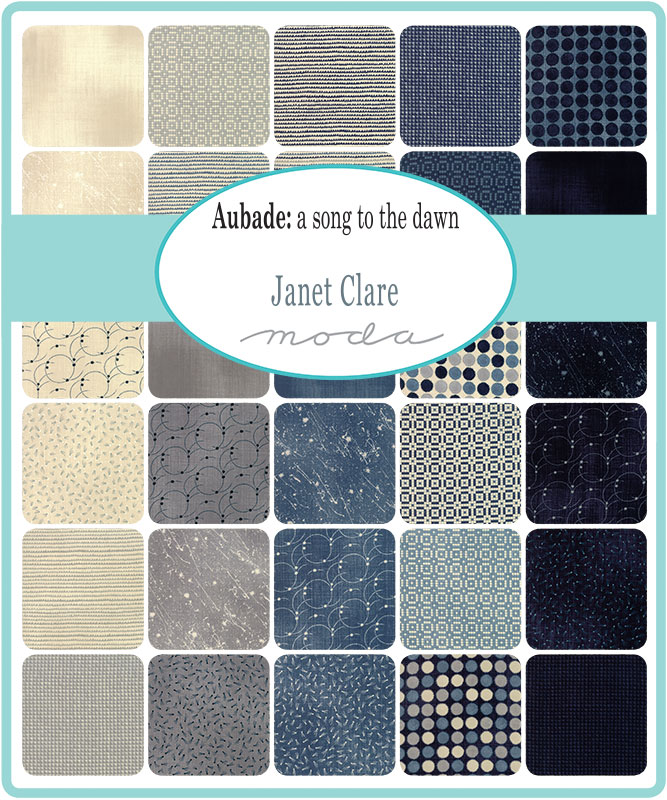
We’re giving away one of Janet’s Artisan Apron patterns...and maybe a bit of fabric, too!
Leave a comment about an apron and we’ll chose a winner at random.

Comments